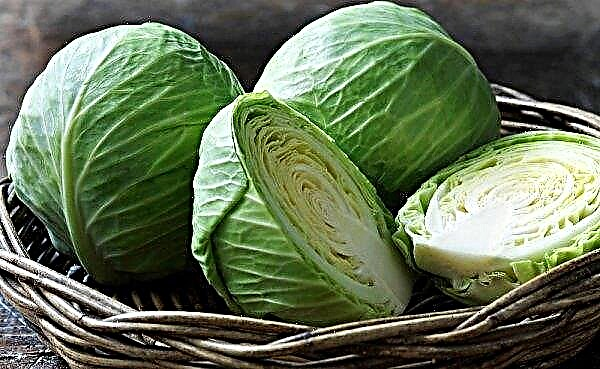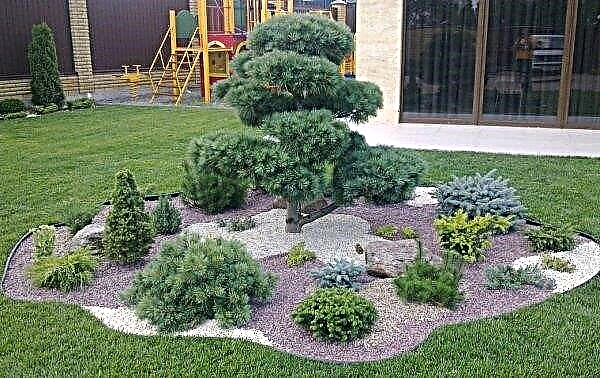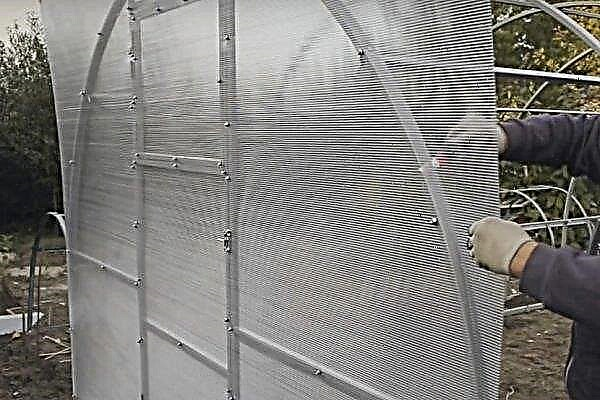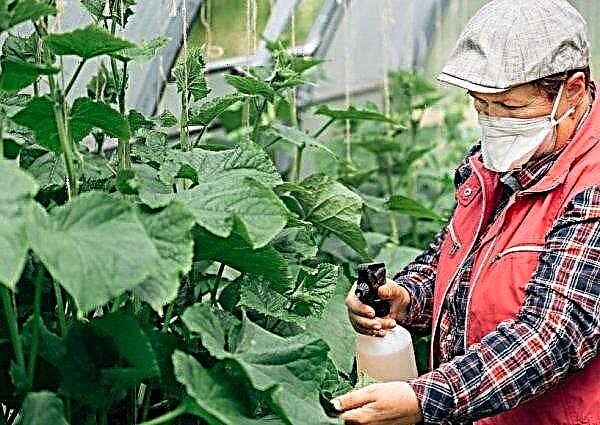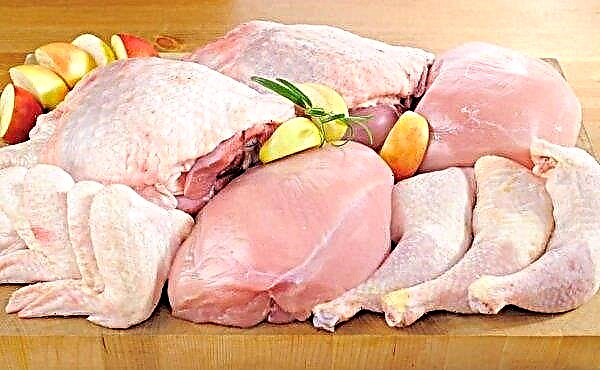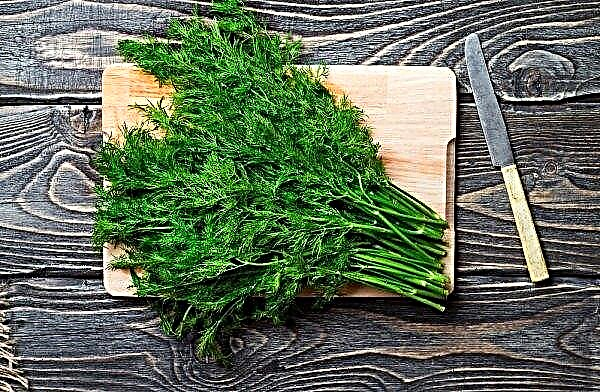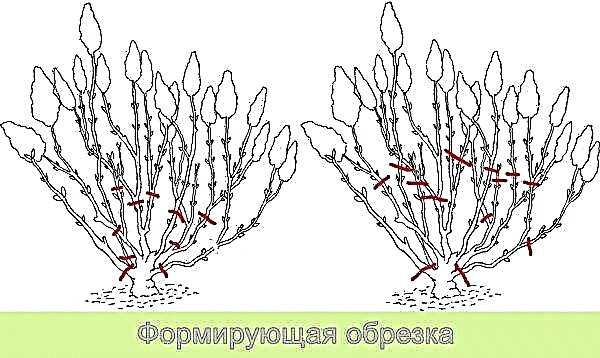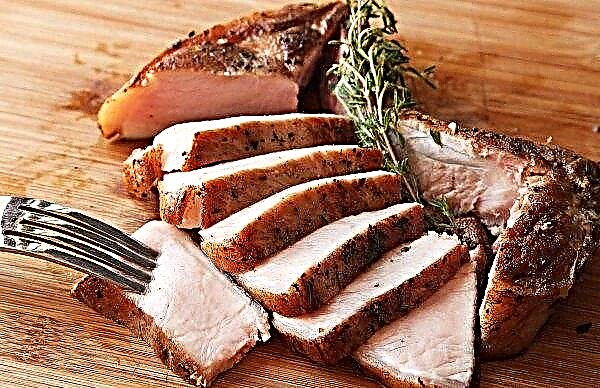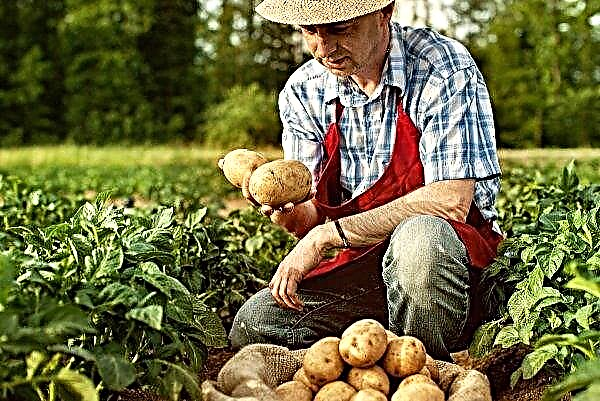To get a good harvest of any vegetable, the correct selection of the variety is important. Before planting any vegetable plant, you should familiarize yourself with the conditions that it needs and with recommendations for care. This article will be useful to those who are in search of a high-yielding variety of carrots. About cultivating a variety called Karotel read below.
Description and characteristics of the variety
Carrot Carot is very popular among summer residents and gardeners, and for decades has been one of the top ten varieties. Consider the reasons for its popularity, and learn about its advantages and disadvantages.
Did you know? Not only root vegetables of carrots can be eaten, edible and the ground part. It is used as an ingredient in soups, main dishes, salads. Tea is also brewed from the tops.
Origin of the variety
This is one of the oldest varieties. His selection began in the 70s of the last century, after in France the best vegetable growers and breeders resolved issues related to improving the quality of carrots.
Later, several varietal types were bred: Paris Carrot, Polar Cranberries, Alenka, Carotel Select. These types differ from the usual Caroteli varieties, which are in the shape, size and color of the fruit.

Landing Regions
Carotel is preferred to cultivate in areas of the middle zone. However, the variety can be cultivated in all regions with normal climatic conditions for farming.
Ripening time
Root crops ripen at a medium speed in terms - after 100-110 days after sowing. They are formed in the form of cones with a blunt end. They have a core. The skin is orange-red. The pulp is tasty, juicy. It contains a large amount of carotene - 10–13% and sugar - 6–8%. The average weight of one fruit is 60 g, length - 14-15 cm. Under improved conditions and care, root crops of 20 cm in length and 120 g in weight are found.
Did you know? American farmer Christopher Qually managed to grow the largest carrot in the world. She weighed 10.2 kg. The giant vegetable is recorded in the Guinness Book of Records.
Productivity
If carrots grow in favorable conditions and are properly cared for, their yield will be 7–8 kg per 1 m².
Pros and cons of the variety
- Among the advantages of the Karotel grade are:
- high productivity;
- excellent keeping quality;
- juiciness and beautiful appearance of the fruit;
- resistance to shooting, colloquial disease, major diseases;
- preservation of presentation after transportation;
- the possibility of cultivating under the winter.

Landing Features
This carrot is planted by sowing seeds in open ground. Since the variety is frost-resistant, planting can be done 2 times a year. The optimal landing dates are April and October. In spring, it is necessary to wait until the air temperature reaches + 15 ... + 18 ° С.
Site selection and soil preparation
For the cultivation of carrots, it is necessary to choose a well-lit area, which for a long period in the afternoon is exposed to the sun. It must be prepared in the fall: remove plant debris and add complex mineral fertilizers for digging, calculating the dosage in accordance with the instructions.
If the autumn preparation was not carried out, in the spring, 14 days before sowing, you need to dig the soil 20-25 cm deep and add mineral fertilizers.Important! Organic fertilizers (fresh manure, mullein) is not recommended. Carrots react poorly to such top dressing. In addition, a high nitrogen content in the soil impairs the palatability of the fruit.
The best soil for cultivating carrots is one that has the following characteristics:
- friability;
- fertility;
- with slightly acidic or neutral pH.

Crop rotation rules
In order to get a high and high-quality crop, as well as to prevent the development of diseases and the reproduction of harmful insects, it is necessary to follow the rules of crop rotation. It is good to plant carrots after plants of the cabbage family, potatoes, greens, cucumbers, zucchini and green manure. You can not place this vegetable crop in the beds where carrots, beans, parsley used to grow.
Important! Before planting carrots, it is advisable to grow other crops in the following sequence: in the first year - green manure, in the second - cucumbers or cabbage, in the third - green manure, in the fourth - onion.
Sowing technology
In addition to soil, preparation before sowing requires seed material. It must be hardened by placing it in the refrigerator for 10 days, and then soak in warm water for several hours. Sowing is done after complete drying.
Sowing technology is as follows:
- Make grooves on the bed.
- Spread seeds in them at intervals of 2 cm, deepening into the soil by 0.5–1 cm. Recommended row spacing is 25–30 cm.
- Cover with a film or non-woven material.

Growing and caring for carrots
After emergence, sprouts need to be thinned. The distance between each plant should be 2-3 cm.
In the future, regular procedures such as:
- hydration;
- top dressing;
- soil care;
- preventive treatment against infection by diseases and the spread of parasitic insects.
Watering
Watering the crop is necessary 1 time in 7-10 days. You should focus on the condition of the soil and moisten it as soon as the top layer dries. How much water needs to be poured under one plant depends on its age. On almost mature root crops, such a volume is needed that it moistens 30 cm of soil inland.
A day after watering, it is necessary to carry out loosening. This procedure will avoid the formation of a hard crust on the surface of the earth and improve the moisture and air conductivity of the soil.Important! Watering should be done regularly, since watering is too frequent, and then their prolonged absence, or vice versa, leads to the formation of deformed fruits.
Fertilizer application
Rich yields are possible only with timely top dressing.
For carrots, fertilizer will need to be applied 2 times per season:
- 3-4 weeks after emergence.
- 2 months after the first feeding.
The following types of fertilizers can be applied:
- nitrofosco (1 tbsp. l per 10 l of water);
- wood ash (2 tablespoons per 10 liters of water);
- potassium nitrate (20 g) + urea (15 g) + double superphosphate (15 g) + water (10 l).

Pest and Disease Control
The most dangerous pest for carrots is carrot fly. To avoid defeat by it, a vegetable plant is periodically sprayed with infusions made from tomato tops or garlic. It is also important to remove weeds in a timely manner.
When a fly appears on the beds, it is necessary to process the plantings with insecticides, for example, Intavir, Actellik.
Carotel is resistant to major diseases. If required, it is necessary to treat with a 1% solution of Bordeaux fluid. The same drug treats alternariosis and fomosis.
Harvesting and storage
Harvesting is calculated in accordance with the period recommended by breeders — approximately 3.5–4 months after planting. To find out the condition of root crops, 2-3 pieces should be extracted from the soil. If the carrots have reached the desired length and acquired a red-orange color, it can be removed.
Harvesting is planned for dry weather. Root crops can be dug with a pitchfork, a shovel, or pulled out manually by greens. After extraction from the soil, they are cleaned of the remnants of the earth and cut greenery. Then the fruits are dried from 2 to 12 hours. Completely dried fruits are sent for storage.
Store the vegetable at a temperature of 0 ° C to + 2 ° C and an air humidity of 90–95%. Such conditions are observed in cellars, cellars. To preserve vegetables for longer, they are rolled in a clay mash and stored in boxes. If this is not possible, you can put the root crops in boxes and sprinkle them with sand or a mixture of sand with slaked lime. It is also possible storage in plastic bags with sawdust.
Carrot Carrot is a high-yielding table variety with a lot of advantages, which is also easy to grow. Vegetables are used for fresh and processed form. The root crop is suitable for cooking, stewing, it is introduced into the children's and diet menus.
Network user reviews
ADVANTAGES: tasty and fruitful
DISADVANTAGES: no
I plant carrots a lot every year, because we really love to have a lot of it in all dishes. And now, for several years, no matter what variety I buy, I definitely sow the Karotel variety. My garden is a little downhill and the earth is clay above and chernozem below. I sow carrots in long rows across the entire garden, and if other varieties under the top on clay give a not very good crop, then for the Karotel variety I would not say that. Not a single year this variety has failed me. In terms of productivity, I have it the same along the entire length of the garden. It is also very juicy, I make juices from it. It is also convenient to clean, it is plump and short. Of all the varieties, this one is perfectly stored with me until the new crop.

